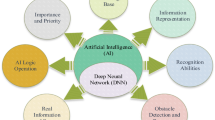Abstract
In this paper, an intelligent approach, called HERON (hybrid evolutionary optimization for nutraceutical manufacturing), is proposed to optimize a variety of manufacturing processes in the nutraceutical field. The approach integrates the Taguchi method, an artificial neural network (ANN), and a genetic algorithm (GA). The Taguchi method is used to cost-effectively gather the data on the process parameters. Data obtained by the Taguchi method are divided into input and output data for an ANN’s input and output parameters, respectively. The ANN trains itself to develop the relationship between its input and output parameters. The trained ANN is then integrated into a GA as the fitness function, such that the GA can evolutionarily obtain the optimal process parameters. The HERON is validated through a manufacturing process on soft-shell turtle soft-capsules. The objective is to minimize the soft-capsule defect rate. Compared to the defect rates obtained by the empirical and Taguchi methods, the HERON reduces the defect rate by 43.75 and 32.5 %, respectively. In addition, compared to the manufacturing costs obtained by the empirical and Taguchi methods, the HERON reduces the manufacturing cost by 11.81 and 25.29 %, respectively.







Similar content being viewed by others
References
Amini, H., Yazdi, M. R. S., et al. (2011). Optimization of process parameters in wire electrical discharge machining of TiB2 nanocomposite ceramic. Proceedings of the Institution of Mechanical Engineers Part B-Journal of Engineering Manufacture, 225(B12), 2220–2227.
Castro, L. N. D. (2006). Fundamentals of natural computing: Basic concepts, algorithms, and applications. London: Chapman & Hall/CRC.
Cheng, J., Liu, Z. Y., et al. (2013). Multiobjective optimization of injection molding parameters based on soft computing and variable complexity method. International Journal of Advanced Manufacturing Technology, 66(5–8), 907–916.
Ferrari, S., & Stengel, R. F. (2005). Smooth function approximation using neural networks. Ieee Transactions on Neural Networks, 16(1), 24–38.
Huang, C. Y., & Huang, H. H. (2014). Process optimization of SnCuNi soldering material using artificial parametric design. Journal of Intelligent Manufacturing, 25(4), 813–823.
Jha, M. N., Pratihar, D. K., et al. (2014). Knowledge-based systems using neural networks for electron beam welding process of reactive material (Zircaloy-4). Journal of Intelligent Manufacturing, 25(6), 1315–1333.
Li, T. S., & Chen, S. H. (2011). Modeling and optimization of thermal-flow lithography process using a neural-genetic approach. Journal of Intelligent Manufacturing, 22(2), 191–200.
Lin, H. C., Su, C. T., et al. (2012). Parameter optimization of continuous sputtering process based on Taguchi methods, neural networks, desirability function, and genetic algorithms. Expert Systems with Applications, 39(17), 12918–12925.
Liu, P. Y., & Li, H. X. (2004). Efficient learning algorithms for three-layer regular feedforward fuzzy neural networks. Ieee Transactions on Neural Networks, 15(3), 545–558.
Murad Chia Jei Biotechnology Company. http://www.muradchiajei.com/english/chineseindex/chineseindex.htm.
Murthy, K. S., & Rajendran, I. (2012). Optimization of end milling parameters under minimum quantity lubrication using principal component analysis and grey relational analysis. Journal of the Brazilian Society of Mechanical Sciences and Engineering, 34(3), 253–261.
Roy, R. K. (2010). A primer on the Taguchi method. Society of Manufacturing Engineers.
Sankyo Company. http://www.sankyocoltd.co.jp/e-plantr.htm.
Sibalija, T., Majstorovic, V., et al. (2011a). Taguchi-based and intelligent optimisation of a multi-response process using historical data. Strojniski Vestnik-Journal of Mechanical Engineering, 57(4), 357–365.
Sibalija, T. V., Majstorovic, V. D., et al. (2011b). An intelligent approach to robust multi-response process design. International Journal of Production Research, 49(17), 5079–5097.
Sibalija, T. V., & Majstorovic, V. D. (2012a). An integrated approach to optimise parameter design of multi-response processes based on Taguchi method and artificial intelligence. Journal of Intelligent Manufacturing, 23(5), 1511–1528.
Sibalija, T. V., & Majstorovic, V. D. (2012b). An integrated simulated annealing-based method for robust multiresponse process optimisation. International Journal of Advanced Manufacturing Technology, 59(9–12), 1227–1244.
Siddique, N., & Adeli, H. (2013). Computational intelligence: Synergies of fuzzy logic, neural networks and evolutionary computing. New York: Wiley.
Simon, D. (2013). Evolutionary optimization algorithms. New York: Wiley.
Tansel, I. N., Gulmez, S., et al. (2011). Taguchi method-GONNS integration: Complete procedure covering from experimental design to complex optimization. Expert Systems with Applications, 38(5), 4780–4789.
Tsai, J. T., Chou, J. H., et al. (2006). Tuning the structure and parameters of a neural network by using hybrid Taguchi-genetic algorithm. Ieee Transactions on Neural Networks, 17(1), 69–80.
Tsai, T. N. (2014). A hybrid intelligent approach for optimizing the fine-pitch copper wire bonding process with multiple quality characteristics in IC assembly. Journal of Intelligent Manufacturing, 25(1), 177–192.
Tzeng, C. J., & Chen, R. Y. (2013). Optimization of electric discharge machining process using the response surface methodology and genetic algorithm approach. International Journal of Precision Engineering and Manufacturing, 14(5), 709–717.
Tzeng, C. J., Yang, Y. K., et al. (2011). Optimization of wire electrical discharge machining of pure tungsten using neural network and response surface methodology. Proceedings of the Institution of Mechanical Engineers Part B-Journal of Engineering Manufacture, 225(B6), 841–852.
Wang, J. X., & Zuo, S. L. (2013). Vulcanizing process parameter optimization based on RBF-GA Algorithm. Metalurgia International, 18(1), 76–80.
Acknowledgments
This research is partially supported by the Ministry of Science and Technology of Taiwan under Grants NSC 99-2622-E-327-017-CC3, NSC 100-2221-E-327-017, NSC 99-2218-E-033-004, NSC 100-2221-E-033-080, MOST 103-2221-E-110-087, and MOST 104-3113-M-110-001. The authors would like to give special thanks to Mr. Hao-Chin Chang, a Ph.D. research assistant at National Kaohsiung First University of Science and Technology, for his support in conducting necessary simulations and experiments.
Author information
Authors and Affiliations
Corresponding author
Rights and permissions
About this article
Cite this article
Liu, TK., Chou, YC. & Wen, YT. Hybrid evolutionary optimization for nutraceutical manufacturing processes. J Intell Manuf 28, 1933–1946 (2017). https://doi.org/10.1007/s10845-015-1079-8
Received:
Accepted:
Published:
Issue Date:
DOI: https://doi.org/10.1007/s10845-015-1079-8




